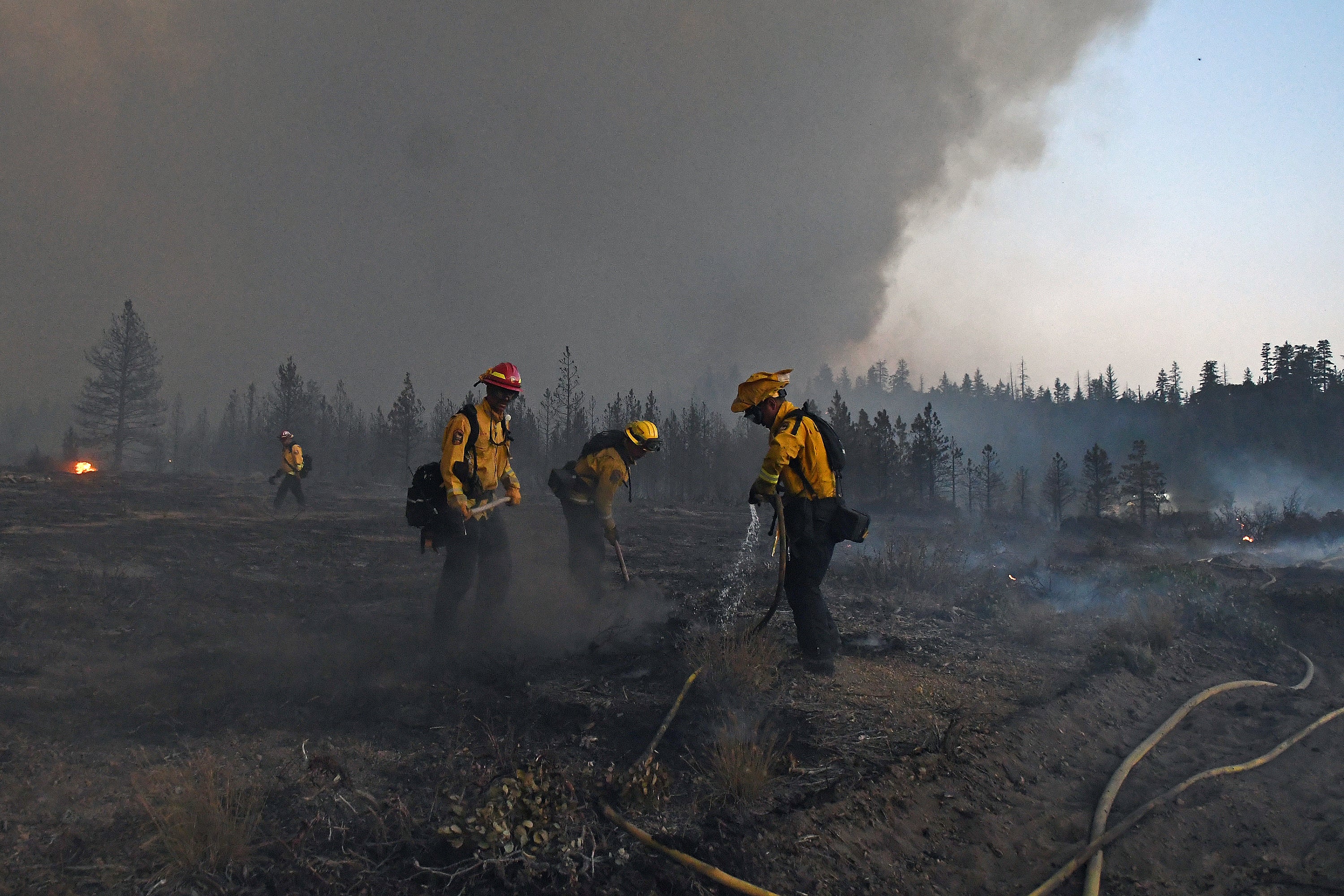California firefighters battle big wildfires in high heat
Hundreds of firefighters are working in high heat to beat back wildfires in the forests of far Northern California

Hundreds of firefighters worked Thursday in high heat to beat back wildfires in the forests of far Northern California where the flames have forced many communities to evacuate.
Mount Shasta, the volcano that towers over the region, was shrouded in a haze of smoke plumes so huge they could easily be seen in images from weather satellites in space.
The scene was ominously reminiscent of last year's California wildfire season, which scorched more than 6,562 square miles (17,000 square kilometers), the most in recorded history.
An extraordinary Pacific Northwest heat wave that extended into the upper reaches of California was slowly receding, but it was only expected to cool off slightly before temperatures trend back up heading into the Fourth of July weekend, forecasters said.
“It is very hot and dry,” said Suzi Johnson, a Shasta-Trinity National Forest spokeswoman for the Salt Fire, which broke out Wednesday and quickly grew to more than 4 square miles (10 square kilometers), temporarily shutting down Interstate 5.
California and the rest of the U.S. West is mired in a historic drought tied to climate change, which also is contributing to worsening wildfire seasons and heat waves.
The fire was a threat to homes around Shasta Lake north of the city of Redding more than 200 miles (322 kilometers) north of San Francisco The huge lake is popular with vacationers, but its water level is dramatically low because of the drought.
Evacuation orders were in place for some areas, but there was no immediate information on how many people were forced to flee.
To the north, the Lava Fire burning partly on the flanks of Mount Shasta grew to nearly 31 square miles (80 square kilometers) and was partially contained. Evacuation orders for communities near the city of Weed were still in effect.
The steep, rocky terrain challenged nearly 1,300 firefighters battling the blaze, which was ignited by lightning last week.
To the northeast, a fire that broke out Monday in the Klamath National Forest and forced evacuations has grown to about 15 square miles (38 square kilometers). The fire was expected to advance north toward Oregon and its cause was being investigated.
Fire authorities throughout California stepped up campaigns urging people not to use fireworks to celebrate the Fourth of July, citing both the explosive dangers and the threat of wildfires in the withering conditions.
“The fuels are bone dry,” Los Angeles County Fire Chief Daryl Osby said at a news conference. “We are extremely concerned about the use of fireworks of all kinds.”
___
Antczak reported from Los Angeles.